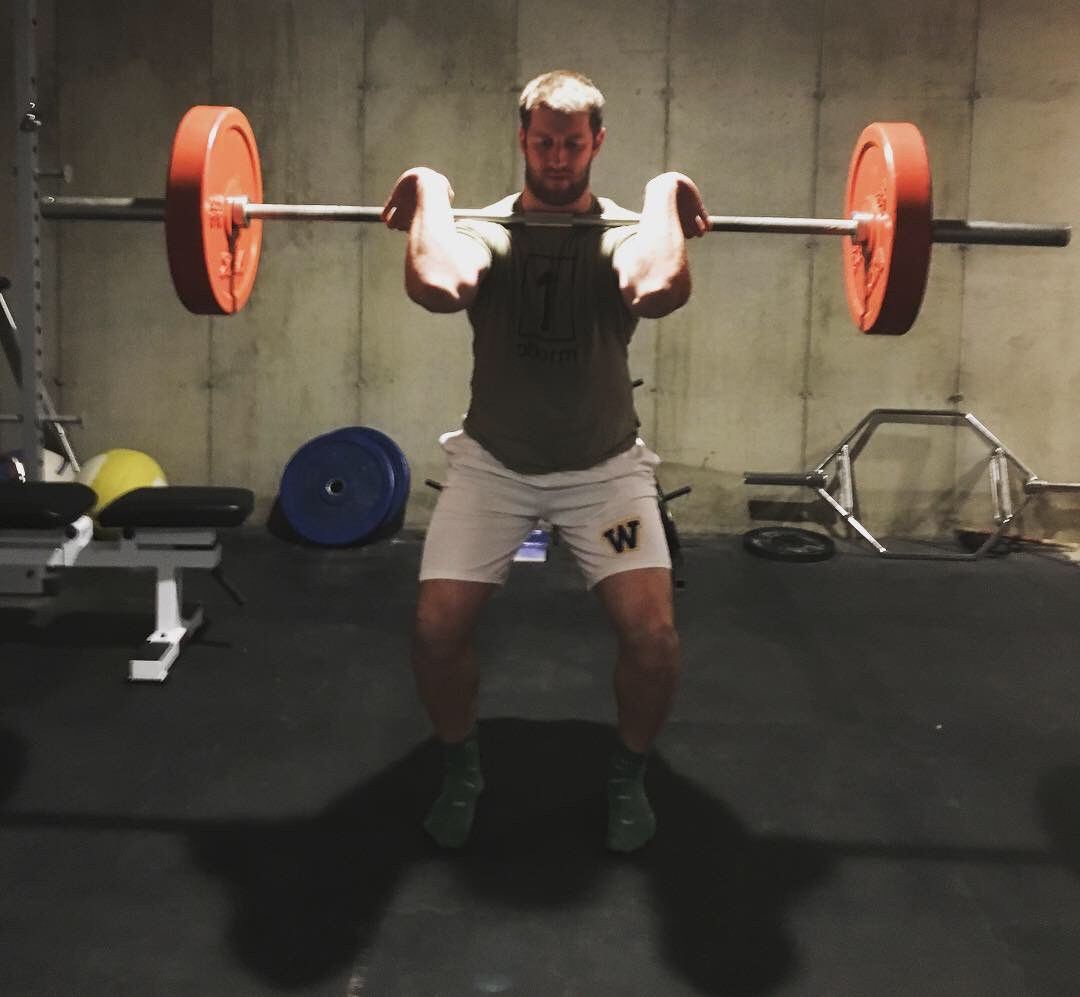
There are plenty of ways to coach and teach the clean and for a variety of different reasons. What I mean is that you have the hang clean, power clean, olympic clean, etc as well as different grip options, lead up options, and accessory exercises. That’s a lot to consider when planning how to develop power in a particular individual. Here I’ll try and talk my way through the thought process I use.
For the most part, my primary demographic has been high school and college athletes. I have worked with some professional athletes as well as general population, however, the primary is high school/college athlete.
With this population, I am trying to increase expression of certain qualities as well as increase performance on tests. When it comes to how the coaching staff views a particular player coming in to preseason, the tests they’re going to perform is the window they use. If you can wow the coaches with performance on these tests, there is a good chance that the athlete you’ve been working with will see the field. It must be stated (I can’t believe that it does) that if the player is hurt because of bad coaching/programming/etc then it doesn’t matter. That athlete would be a moron to return to your facility.
The tests that I have to improve my athletes performance on is usually some sort of sprint test as well as some sort of jumping test as it applies to the use of an olympic clean. Of course the athlete will improve with performing the exact test, but that’s not good enough. Of course the athlete will improve the test as you improve sprinting technique and jumping technique, but that too is still not good enough. This is where knowing a thing or two about exercise physiology/exercise science comes in handy. This is the why of using olympic lifts or loaded jumps, and as it pertains to this particular article, the hang clean specifically.
Why a hang clean vs. a traditional olympic clean or power clean?

 With proper hook grip and all
With proper hook grip and allA power clean or traditional olympic clean both start from the floor and can be too technical for the novice. My job isn’t to create olympic lifters, it is to create an expression of power with athletes. If I want an athlete to pull from the floor, I’ll simply add a version of deadlifts into their program. Also, I like to measure power because I’m a nerd, and like physics. If my start position and my end position are the same for my hips, what is the total displacement? Makes it a little easier to measure.
The traditional Olympic Clean requires an individual to lift as much weight as they can from the floor to their shoulders in an effort to get them ready to Jerk the bar overhead. The bar really doesn’t move all that far as you’re trying to minimize the distance that the bar has to travel, making it a little less challenging. Also, you have to have amazing hip mobility to do well with this activity. As has been stated before by many a famous pop artist, “hips don’t lie”.
The power clean is a crazy spawn between the Olympic clean and the hang clean. You take the bar from the floor to the rack position as fast as you can. Typically, this turns into back injuries and disgusting mechanics.


Depending on the sport, there are a couple of ways to load the clean as well. Traditionally for all sorts of lifting, we meat heads like to load the bar with as much weight as we can perform while still using good form. In certain cases this isn’t warranted. For non-contact athletes–think soccer, baseball, basketball, tennis, golf, etc–we don’t need to use a huge weight to elicit a response. Instead, we are able to use as little 40 per cent of what they’re able to use to still get adaptation. This will virtually be a total expression of power here where these athletes are cued to move the bar as fast as they can.
For contact sports, like hockey and football, we need to add a little weight. They will still get the expression of power that the other athletes are getting, but they will also get weight acceptance which is huge. Think about a 200 pound man hitting you into a wall at 25 miles per hour. That’s the sort of weight acceptance that needs to be encouraged. You can get a little fancy and do a heavy hang clean day and a light hang clean day as well. Personally, I like to have my lighter hang cleans, and my compound clean varieties be in the offseason where I am trying to improve the wear and tear from the previous season as well as movement composition. Then I’ll get heavier as the season comes into view.
Hang cleans promote triple extension–ankle, knee, hip–as well as fast movement. So does sprinting, and so does jumping. Get really good at the hang clean for your athletes and you’ll be giving them that extra edge that they need to improve over the rest of the field.









